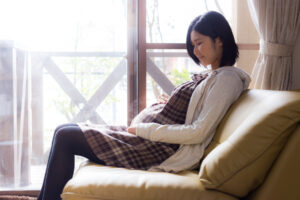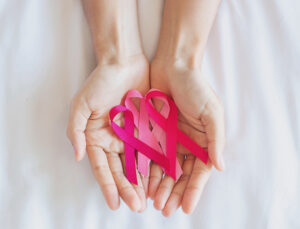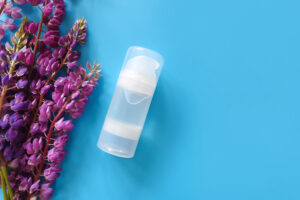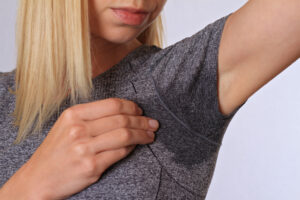By Iris Farrou
10 Nov, 2021
Menstruation
Best gyns in Buffalo, Best OB practices in Buffalo, Best OBGYN Groups in Buffalo, Buffalo OB-GYN, Buffalo OBGYN, Chouchani MD, WNY OB-GYN, WNY Ob-gyn doctors, WNY OBGYN, women's health
 The monthly phenomenon of menstruation is a reality for many women: legs and breasts get swollen, cramps arrive, and the uterine lining does its monthly job. Though in our adult years we are more or less prepared for this arrival, there was a time when we were expecting our periods like a rite of passage into womanhood. The time for the Very First Period! It may have been years since yours, but you also may have a young teen in your life who is now where you once were, waiting for her first menstrual cycle to make its appearance.
The monthly phenomenon of menstruation is a reality for many women: legs and breasts get swollen, cramps arrive, and the uterine lining does its monthly job. Though in our adult years we are more or less prepared for this arrival, there was a time when we were expecting our periods like a rite of passage into womanhood. The time for the Very First Period! It may have been years since yours, but you also may have a young teen in your life who is now where you once were, waiting for her first menstrual cycle to make its appearance.
How can you be prepared to have a first period conversation?
Whether it is your daughter, niece, younger sister, a cousin, or a younger friend, you can share some simple facts with the young woman in your life who may have questions about her menstrual cycle. Most people start their periods around the age of 12, but a little earlier or later is not unusual. With puberty, our bodies start becoming capable of reproduction: first the breasts start developing, and a few years later menstruation begins.
Your period may knock on your door without any warming, or you may experience pre-menstrual syndrome (the infamous PMS). Some common symptoms include acne, breast swelling and soreness, abdominal bloating, back pain, and clear or vaginal discharge. You may also find yourself feeling more tired than usual, as well as more irritable or emotional. Constipation and diarrhea are also not uncommon.
When it’s Time
It’s always good to be prepared and awaiting the arrival of your period is no exception. Many people carry a period kit in their bags, which can include clean underwear, a pad or a tampon, wipes, and pain relievers. If you have that with you, great! But sometimes we’re not prepared… worry not, female ingenuity goes a long way—you can make a pad out of toilet paper! Take at least ten pieces of TP and fold them one over another to form a rectangular. Place this in the middle part of your underwear and wrap some TP around it on the opposite direction, tucking in the end of it on the rectangular piece to hold it in place. Though far from perfect, this is still a way to protect your clothing and feel a little more comfortable.
What about the Pains?
Period cramps happen because the uterine lining has prepared itself for a fertilized egg, but hasn’t received any, so it’s now thickened and discharging itself. You can help alleviate the pains by taking some ibuprofen or naproxen. If you have any allergic reactions to medications, be careful which one you choose! You can also use a warm pad on your belly or take a hot shower. Many women find it helpful to walk around some or consume more water than usual.
It may be super daunting at first but remember that the more you learn your body’s symptoms as time goes by, the more prepared you will be and the easier it will get. And if you’re reading this to give advice to a younger menstrual sufferer, remember that your personal experience goes a long way!
More
By Iris Farrou
30 Oct, 2021
Pregnancy
Best gyns in Buffalo, Best OB practices in Buffalo, Best OBGYN Groups in Buffalo, Buffalo OB-GYN, Buffalo OBGYN, Chouchani MD, Healthy pregnancy, WNY OB-GYN, WNY Ob-gyn doctors, WNY OBGYN, women's health

Even though many high school teachers had teenagers convinced they could get pregnant simply by having sex (and there’s definitely merit to that), in adulthood things can get a little more complicated. If you and your partner are trying to get pregnant through natural insemination, there are a few factors you may want to take into consideration in order to increase your chances of conceiving.
First Things First would be to become familiar with your cycle so you can determine whether it is a regular one (every 28 days) or an irregular one (shorter or longer). That will also help you find out when you may be ovulating. You can use apps to help you track your cycle, as well as your symptoms on the days leading up to menstruation and after. You can also notice symptoms such as an increase in body temperature and more vaginal secretions on the days leading up to your ovulation.
Knowing when you ovulate means you can determine your most fertile days each month. On a regular cycle, this would be 2 weeks before you get your period. It can be a little more difficult to predict that on an irregular cycle, but it is usually 12-16 days before you menstruate. You can better determine this with the help of home ovulation prediction kits, which test urine for luteinizing hormone, a substance whose levels increase each month during ovulation.
The short fertility window spans 5 days before ovulation begins and the 1st day of it, and that’s when the chances of conceiving are even higher. Many couples wonder if it would be best to have sex every day during that window, and the short answer is: yes! The highest rates of pregnancy occur in coupled who have sex regularly, and near or on the time of ovulation.
Knowing the medical information about your body is definitely helpful, as is learning to recognize where your cycle is and being in tune with it. If you have an IUD, tied tubes, or feel that you need assistance in planning a pregnancy, you can always consult an expert and be in touch with your doctor. However, you may also want to take into consideration some of the following factors that contribute to conceiving:
- Maintaining a healthy weight can help, as excess body fat has been found to produce more estrogen, which can interfere with ovulation. Underweight women can also suffer from irregular periods or could also stop ovulating.
- Eating healthy foods that contribute to preparing a woman’s body for pregnancy by providing adequate calcium, protein and iron, and folic acid. Try to avoid foods that are high in mercury, as it has been found to enter women’s bloodstream and has been linked to negatively affecting a baby’s development.
- Cutting down on alcohol and smoking are very important factors in not only maintaining your general health, but also ensuring your body is a healthy home for a fetus.
Keep in mind that stress can be a huge factor when trying to conceive. Lots of couples face heightened stress and anxiety once they embark on the journey of getting pregnant, which can lead not only to intimacy issues, but also affect a woman’s cycle and throw it all off-balance. Remember this may not be an easy process and being supportive of each other as well as seeking help when needed are key to remaining healthy.
More
By Iris Farrou
19 Oct, 2021
Breast health, Prevention
Best gyns in Buffalo, Best OB practices in Buffalo, Best OBGYN Groups in Buffalo, Buffalo OBGYN, Chouchani MD, WNY OB-GYN, WNY Ob-gyn doctors, WNY OBGYN, women's health, women's health tips
 Along with the abundance of pumpkin spiced lattes and corn mazes around the country, October is also the month that brings us a lot of pink in honor of Breast Cancer Awareness. Approximately 1 in 8 women in the U.S. are afflicted, and more than 2 million women were diagnosed with breast cancer in 2020. Chances are, you already know someone who has been affected by this type of cancer. Though educating yourself on prevention and self-care techniques when it comes to it is of high importance, there are also some ways in which you can join the global effort for awareness.
Along with the abundance of pumpkin spiced lattes and corn mazes around the country, October is also the month that brings us a lot of pink in honor of Breast Cancer Awareness. Approximately 1 in 8 women in the U.S. are afflicted, and more than 2 million women were diagnosed with breast cancer in 2020. Chances are, you already know someone who has been affected by this type of cancer. Though educating yourself on prevention and self-care techniques when it comes to it is of high importance, there are also some ways in which you can join the global effort for awareness.
How can I become involved?
- The pink ribbon is the international symbol for breast cancer, and pink has been associated with promoting awareness of it, as well as the efforts made to support women suffering from breast cancer. Wearing pink or adorning your outfit with a pink ribbon is an easy way to showcase support!
- Volunteering locally or nationally is also a good option, and the American Cancer Society (ACS) runs many programs that you can join: Relay for Life, Road to Recovery, and Making Strides Against Breast Cancer are some of them. You can also join one of the many Komen Race for the Cure events nationwide for another fundraising opportunity.
- Share facts and statistics whenever possible. You can do that in social conversations if the subject is brought up, in support of breast cancer survivors, with your coworkers, or with your kids as well if they are old enough to understand.
What are some basic facts I can share?
The National Breast Cancer Foundation and the American Cancer Society are great resources to learn more about breast cancer, access the latest news and statistics, and keep up with the latest scientific discoveries around it. These resources can back up the following US-specific facts:
- Apart from skin cancers, breast cancer is the most common among women
- 1 out of 8 women will receive a breast cancer diagnosis in her lifetime
- Every 2 minutes on average a woman in diagnosed with breast cancer
- There are over 3.8 billion breast cancer survivors
- 63% of breast cancer cases are diagnosed at a localized stage, for which the 5-year survival rate is 99%
How can I lower my risk?
Though there is no sure way to prevent breast cancer and some of the factors may be outside of your control, such as being born female and growing older, here are some basic actions you can take to lower your risk of breast cancer.
- Get regular mammograms to keep tabs on the health of your breasts. Many clinics offer free mammograms in October, so you can take advantage of this opportunity and urge your friends to do the same. Support them, go with them to the appointment, and lead by example.
- Limit alcohol or avoid it: even low intake of alcohol has been linked to increased chances of getting breast cancer, so try to limit it to 1 alcoholic drink a day.
- Maintain healthy weight: especially after menopause, it is important to maintain a healthy weight by watching your diet and exercising regularly, as weight gain and increased body weight have been linked to increased chances of breast cancer.
More
By Iris Farrou
30 Sep, 2021
Parenting
Best gyns in Buffalo, Best OB practices in Buffalo, Best OBGYN Groups in Buffalo, Buffalo OB-GYN, Buffalo OBGYN, Chouchani MD, WNY OB-GYN, WNY Ob-gyn doctors, WNY OBGYN, women's health
 Co-sleeping is the practice of sleeping with your newborn baby. There are many schools of thought and opinions on the safety, psychological effects and risks associated with the practice. Reviewing factual studies and professional resources on co-sleeping highlights that wanting to sleep with our infants and young children is perfectly natural, and only increases the risk of SIDS by 0.004%. When compared to the 0.006% chance of an infant dying from SIDS alone in their crib, the numbers speak for themselves.
Co-sleeping is the practice of sleeping with your newborn baby. There are many schools of thought and opinions on the safety, psychological effects and risks associated with the practice. Reviewing factual studies and professional resources on co-sleeping highlights that wanting to sleep with our infants and young children is perfectly natural, and only increases the risk of SIDS by 0.004%. When compared to the 0.006% chance of an infant dying from SIDS alone in their crib, the numbers speak for themselves.
Basic Benefits
Western culture has a history of separating mothers and babies at night, compared to other parts of the world that encourage co-sleeping more. As most mother know, sleeping separately from the baby leads to many sleepless nights for all members of the family, physical exhaustion for the caretakers, and of course a disruption of the sleeping cycle that transfers over to the next day.
Though many may believe that adult beds are not safe for the baby—and there is merit to that opinion—what the other school of thought boils this down to is the way in which the mother’s body cocoons the infant to protect it while sleeping. Similar to that is the positioning of the mother’s body when breastfeeding: she bends to form a protective shell around her baby. Mother and infant heartbeats and breathing both slow. The mother’s heartbeat soothes her infant, and the carbon dioxide the mother breathes out stimulates her baby’s breathing.
When co-sleeping, these same positive effects occur, and studies show that the babies move far less when sleeping with their mother than sleeping in their cribs alone, where they tend to toss and turn all through the night.
Tips for safe co-sleeping include:
- Guardrails to prevent the baby from falling off the bed.
- Position the baby adjacent to the mother instead of between the mother and father.
- Large beds, king-sized in particular, allow for plenty of space for safe co-sleeping.
- Make sure to place the baby on their back while sleeping.
- If placing the baby in your bed isn’t possible, a crib next to the bed keeps the baby at arm’s reach.
Do not co-sleep with your baby or young child if you are under the influence of alcohol or any drug, including sleeping medications or sedatives. Also, if you’re overly exhausted, avoid co-sleeping and breastfeeding on extremely soft surfaces to not accidentally cut air flow to your child. If you are extremely obese or the child’s babysitter, co-sleeping is highly advised against.
Behavioral and cognitive development outcome studies also show that co-sleeping is not only safe and healthy but promotes healthier minds and bodies while children grow as well. Consult your GP or OBGYN if you have any questions or concerns about co-sleeping, or for individualized advice.
More
By Iris Farrou
21 Sep, 2021
Sexual health
Best gyns in Buffalo, Best OB practices in Buffalo, Best OBGYN Groups in Buffalo, Buffalo OBGYN, Chouchani MD, WNY OB-GYN, WNY Ob-gyn doctors, WNY OBGYN, women's health, women's health tips
 Most couples are familiar with the use of lubricants when being intimate with each other, and many women may even use them on their own. Lubricants are typically essential in every sexually active household, and with so many personal gels and moisturizers out there to choose from, which ones are truly the healthiest for our vaginas and their pH balance?
Most couples are familiar with the use of lubricants when being intimate with each other, and many women may even use them on their own. Lubricants are typically essential in every sexually active household, and with so many personal gels and moisturizers out there to choose from, which ones are truly the healthiest for our vaginas and their pH balance?
It’s a common myth that water and silicone-based lubricants can disrupt vaginal pH balance and/or cause infections. The amount of acidity or alkalinity in a water-based environment, known as pH, is best between 3.5 and 4.5. Comparatively, the pH of semen is 7.0 to 8.5, and rectal pH is around 7.0. Our personal and partner’s hygiene is pivotal to helping keep our pH balance in check, especially when there are different pH balances involved.
Choosing a Lubricant
There are so many new lubricants on the market claiming to be natural and organic, it can sometimes feel overwhelming. You may be wondering, “are they really better for me?” If you have sensitive skin in your vaginal area or are prone to bacterial vaginosis (also known as Candida bacteria), natural and organic may be the way to go. Here are some of the best available to keep everything feeling fresh down there:
- Aloe Life Personal Gel Moisturizer Unscented
- Nuvia Organics Evening Primrose Oil
- Sustain Organic Lubricant
- H2OH! Water Based Lubricant
- Good Clean Love Almost Naked Organic Personal Lubricant
These are just a few of the best rated, healthy, and balancing personal moisturizers on the market. There are even brands of olive oil that are specifically for lubrication! However, since this is a very personal matter, you should always choose carefully based on how your body is experiencing different elements. Some women are extremely sensitive to oil-based lubricants, so if that sounds like you, it is advisable to go for a water-based one. Additionally, some may be sensitive to additional odors. Whether that is you or your partner, you may want to consider avoiding scented lubricants—even if the scent is organic.
Attention Points
- If at any point you experience irritation with a product, discontinuing usage and safely cleaning the area with plenty of water, patting dry from front to back with clean toilet paper, and contacting your primary care physician should symptoms occur is pivotal.
- It is also important to remember that oil-based lubricants, even plain olive oil that can be used for lubrication, heighten the risk of condom breakage.
- Warming lubricants should also be avoided, as they disrupt the vaginal pH. You can naturally warm a lubricant at room temperature before use.
- Avoid using internal products that don’t fall within our normal 3.5 to 4.5 natural pH range and douche as infrequently as possible, as it rinses out the healthy bacteria in our vaginas. Also avoid scented soaps and talcum powder. Opt for showers instead of baths.
More
By Iris Farrou
09 Sep, 2021
Diet & Exercise
Best gyns in Buffalo, Best OB practices in Buffalo, Best OBGYN Groups in Buffalo, Buffalo OB-GYN, Buffalo OBGYN, Chouchani MD, WNY OB-GYN, WNY Ob-gyn doctors, WNY OBGYN, women's health, women's health tips
 Food allergies affect over 200 million people worldwide, but food sensitivities affect a much higher number, making both a public health concern. Once women reach the age bracket of 13 to 21, they are significantly prone to and diagnosed with food sensitivities. As we continue to age, our immune and digestive systems don’t function as well as in our youth. Other internal, external, and environmental factors like stress, psychological factors, IBS, sensitivity to food additives and more may have something to do with food-related sensitivities.
Food allergies affect over 200 million people worldwide, but food sensitivities affect a much higher number, making both a public health concern. Once women reach the age bracket of 13 to 21, they are significantly prone to and diagnosed with food sensitivities. As we continue to age, our immune and digestive systems don’t function as well as in our youth. Other internal, external, and environmental factors like stress, psychological factors, IBS, sensitivity to food additives and more may have something to do with food-related sensitivities.
Difference of Allergies and Sensitivities
To differentiate, food allergies typically are symptomatically like anaphylaxis, cause skin rashes, and in some cases can be life threatening. Food sensitivities, however, are comparatively less serious and limited to digestive issues.
How to Address Them: Understanding Them
While we can’t control our bodies in every way as we age, here are some precautions we can take and common issues that will help us recognize an issue when it begins.
- Lack of Enzymes: the enzymes needed to fully digest food begin to decrease as we grow older. For example, lactose intolerance is due to a decrease in lactase, a digestive enzyme that breaks down lactose. Lactase production naturally decreases as we age, so what you can do to supplement that is consistently consuming dairy products to prevent deficiency.
- Additives/Food Dyes: sensitivity to food additives can worsen as we age. Food dyes and colorings, antioxidants, flavorings, and preservatives are the most common instigators. The FDA allows more additives than other countries and, as we are more and more exposed to them, reactions can happen with age. Skin reactions, gastrointestinal issues and respiratory symptoms are the most common physical responses. It’s always best to read food labels carefully and keep a food diary if new symptoms arise.
- Stress: Many sensitivities that arise in women aged 28 and older are stress-related. There are different personal ways each one of us uses to relax, and therapy is always a helpful resource if you find your stress levels are not reducing.
- Premenstrual Syndrome: A small study found a connection between lactose intolerance and premenstrual syndrome (PMS), as well as mental depression especially in females. Their prevalent theory is that high concentrations of lactose interfere with tryptophan and serotonin metabolism, which are crucial for mood control.
While we can’t control everything that goes on around and in our bodies, we can be aware of what helps, what signals a developing issue, and the preventative methods we can take as we grow older and wiser. Always consult your doctor if you have any questions, unexplained symptoms, or concerns.
More
By Iris Farrou
27 Aug, 2021
Women's Health
Best gyns in Buffalo, Best OB practices in Buffalo, Best OBGYN Groups in Buffalo, Buffalo OB-GYN, Buffalo OBGYN, Chouchani MD, WNY OB-GYN, WNY Ob-gyn doctors, WNY OBGYN, women's health, women's health tips
 Swimming is a wonderful way to exercise, relieve stress, practice less strenuous physical therapy, and many other benefits. Especially in the summer, we use swimming not only as a way to cool down, but also as the primary relaxation technique. After all, what is summertime without imagining ourselves by a pool or by the ocean?
Swimming is a wonderful way to exercise, relieve stress, practice less strenuous physical therapy, and many other benefits. Especially in the summer, we use swimming not only as a way to cool down, but also as the primary relaxation technique. After all, what is summertime without imagining ourselves by a pool or by the ocean?
We are already deep into the summer season, so our bodies have most likely been deep into pools, fresh water, or the sea. Along with the many positive effects that swimming can have on our physical and mental health, there are some elements that pose a threat to female hygiene and vaginal health: the widely dreaded yeast infections.
How are they caused?
Yeast infections are, essentially, fungal infections that cause irritation and discharge, as well as extreme itchiness. They thrive in conditions that help fungi develop: water with bacteria, or water with chemicals, as well as lounging in our swimsuits after swimming—innocently drying off in the sun while giving bacteria ample space to thrive.
How do we prevent them?
Currently over 138 million women suffer from recurrent candid, another name for yeast infections, so sound advice and safe habits can go a long way in preventing swim-induced infections.
- Immediately rinse off in a shower after swimming and change into dry swimsuit bottoms or fresh underwear. This drastically reduces the risk of bacterial development.
- Wash your swimwear when you get home. Use dye-free or sensitive laundry detergent, or if unavailable, rinse thoroughly with fresh water for several minutes. Hang your swimsuit up to dry completely before using it again.
- Reduce or eliminate your exposure to chlorinated water, especially in a hot water environment like a hot tub. This is a more drastic measure meant for those of us who are very prone to UTIs and candida, are pregnant, on antibiotic or certain medications, have diabetes, or a weakened immune system that may lead to yeast infections developing more easily.
- Keep your body hydrated with clean drinking water to assist your bladder in flushing out the bad bacteria and keeping the good bacteria. Remember that the female vagina is almost like a self-cleaning oven, and you can assist it in keeping itself healthy. Eating probiotic foods or taking liquid probiotic supplements, as well as reducing our intake of alcohol and sugary foods can also fortify vaginal pH balance.
What are some symptoms?
- If you experience increased frequent need to urinate, painful urination, chills, burning urination or even lower back aches, you may have developed a urinary tract infection as well.
- Increased discharge that potentially smells stronger and is gray colored, along with vaginal itching, tenderness and/or swelling are all signs of yeast infections.
As always, pay attention to what your body is feeling and doing. If something doesn’t feel, look or act normal down there, contact your gynecologist or general practitioner immediately. Yeast infections and UTIs are nothing to be embarrassed about, and important to address quickly for physical and mental wellness.
More
By Iris Farrou
19 Aug, 2021
Pregnancy
Best gyns in Buffalo, Best OB practices in Buffalo, Best OBGYN Groups in Buffalo, Buffalo OB-GYN, Buffalo OBGYN, Chouchani MD, Healthy pregnancy, WNY OB-GYN, WNY Ob-gyn doctors, WNY OBGYN, women's health, women's health tips

Back pain during pregnancy is one of the most common causes of pain and discomfort. In later pregnancy, the pain can lead to insomnia, fatigue, and women opting for early birth inductions. While many medical professionals and journals label back pain during pregnancy as a “minor” symptom, anyone who has experienced it will tell you that is an understatement.
If you’ve never heard of an Ozzlo Pillow, it’s a wedge-shaped pillow designed to prevent or alleviate both back-aches and back-ache induced insomnia. The wedge pillow is placed under the abdomen while laying on your side, providing great support and relief. An overwhelming 87% of women experience back pain in the last few weeks of gestation. Medical studies found that wedge-shaped pillows do indeed dramatically reduce pain and allow for a better night’s rest. Even using a regular pillow in the same placement can be almost as effective.
Aside from medical studies with the wedge pillow, here’s a list of tried and tested different support pillows that can make pregnancy an even better experience:
- U-Shaped body pillows rank first among most pregnant women, who praise their size and shape-adapting ability, reporting that they relieve most of the pain they feel and reduce discomfort. There are even some U-Shaped body pillows designed specifically for pregnancy with a special space for abdominal placement.
- Memory Foam Body Pillows also do wonders for forming to parts of your body, providing support and pressure relief. This is a slightly more cost-effective option that provides the same level of pain alleviation as other—more specialized and expensive—orthopedic pillows.
- Yana Pillows are similar to U-Shape Pregnancy pillows and have a special filling that provides luxurious relief for both back and side-sleeping pregnant women. It shapes itself on the curves of the body, so when using it your body does not have to inconvenience itself. Rather, the pillow adjusts to provide the support you need and relieve you from the aches of pregnancy.
- The Belly-Bandit is a 3-piece and OB-GYN-designed pillow, best for helping pregnant women sleep on their side to achieve optimal blood flow and oxygen to their baby. As it is a more versatile pillow, its great advantage is that it can be used by women prior to pregnancy so that they get accustomed to sleeping on their sides.
The advantages of pregnancy/orthopedic pillows go beyond pain alleviation: relieving the pain is great, but these pillows also prevent the use of pain relievers, reduce heartburn, avoid orthopedic medical intervention in the long run, prevent postnatal back and sciatic nerve issues, and reduce stress levels. Feel free to consult your doctor if you’re unsure which support pillow would best fit your needs, as you may need different support during the different stages of pregnancy.
More
By Iris Farrou
08 Aug, 2021
Prevention
Best gyns in Buffalo, Best OB practices in Buffalo, Best OBGYN Groups in Buffalo, Buffalo OB-GYN, Buffalo OBGYN, Chouchani MD, WNY OB-GYN, WNY Ob-gyn doctors, WNY OBGYN, women's health, women's health tips
 Mosquitos are an inevitable annoyance during the warmer months for most of us. If you’re pregnant, you’re probably already overwhelmed with all the dangers you’re advised to avoid and adding to this list is now mosquito repellents. Same goes for people with sensitive skin, who are between a rock and a hard place in choosing a mosquito repellent that will not irritate their skin and having to deal with mosquito bites until this is achieved.
Mosquitos are an inevitable annoyance during the warmer months for most of us. If you’re pregnant, you’re probably already overwhelmed with all the dangers you’re advised to avoid and adding to this list is now mosquito repellents. Same goes for people with sensitive skin, who are between a rock and a hard place in choosing a mosquito repellent that will not irritate their skin and having to deal with mosquito bites until this is achieved.
What is the main danger?
While Deet, the nickname of the chemical insecticide “N, N-diethl-meta-toluamide” or diethyltoluamide, has been found to be both safe for humans and effective in protecting against mosquito-borne illnesses in does not cease to be a chemical. As such, it should always be used in moderation and it is likely to annoy your skin, especially if you are rather sensitive.
However, the consensus seems to be that it is safe to use mosquito repellents containing Deet while pregnant. Studies are still ongoing as to the exact effects/risks of mosquito repellents on pregnancies, but moderation is key when we don’t have all the answers.
How can women avoid dangerous chemicals, skin reactions, and pesky bug bites?
- Wear lightweight clothes that cover as much skin as possible; for the exposed parts of your body, try an all-natural insect repellent.
- Sandals are not a good idea, as many mosquitoes are attracted to the smell of feet—this is due to their olfactory preferences. Wear socks or long pants that you can tuck into your shoes to prevent bites on your feet.
- Burn citronella candles and/or incense. Also, ask your pharmacist or natural medicine professionals which essential oils are safe to use while pregnant or for your specific body to ward off unwanted bites.
- Wear loose clothing, and not Spandex: mosquitoes bite right through that! You may also want to consider spraying your clothes with repellents, and not your skin. In this manner, you avoid direct contact with potentially harmful chemicals.
- Avoid immersing yourself in deep-wooded areas, or in areas where a lot of vegetation grows. Mosquitoes are attracted to moisture and standing water, or watery areas that are not regularly cleaned.
- If possible, screen your windows and/or porches at your home. That way you can enjoy summer without being attacked by mosquitoes.
- If you’re traveling to an area where there are high risks of insect-borne diseases like Malaria, Zika or West Nile Virus, the potential risks of using Deet can sometimes outweigh those of the viruses. If using repellents with Deet is your best option, they should be used very sparingly. Anti-malarial medications like Doxycycline may also be prescribed.
As always, consult your gynecologist or medical care provider if you have any questions, concerns, or reactions before traveling. Staying indoors or being in a screened-in outdoor area is always a good option when your body needs ensured, natural and healthy protection and can always give you a break from having to put repellents on your body or bundle up with skin-covering clothing.
More
By Iris Farrou
30 Jul, 2021
Women's Health
Best gyns in Buffalo, Best OB practices in Buffalo, Best OBGYN Groups in Buffalo, Buffalo OB-GYN, Buffalo OBGYN, Chouchani MD, WNY OB-GYN, WNY Ob-gyn doctors, WNY OBGYN, women's health, women's health tips
During times of high heat and temperatures, it is not uncommon to experience excessive sweating. Additionally, women are all too familiar with night sweats and changes in their body temperature during their menstrual cycle; especially when progesterone levels increase and estrogen levels decrease, the part of your brain that controls internal temperatures (hypothalamus) is affected, resulting in irregular sweating. However, excessive sweating may not only be based on hormonal changes but be the cause of something more serious.
What is it?
Excessive sweating is also called hyperhidrosis and it occurs when you sweat more than you would expect based on your surroundings, temperature, and stress levels. It can affect your entire body or just certain areas like your palms, soles, underarms, or face. When there is no underlying medical cause, it is called primary hyperhidrosis, but when there is an underlying cause, it is secondary hyperhidrosis. Conditions that may cause excessive sweating include diabetic hypoglycemia, hyperthyroidism, fever, acromegaly, infection, menopause, medication side effects, and neurologic diseases.
Cause for Concern
Based on the above list, there may be many reasons why you are experiencing excessive sweating, and most of them would require some time to figure out. However, if excessive sweating is accompanied by lightheadedness, nausea, or chest pain, you should seek immediate medical attention. You should still visit your doctor if you suddenly sweat more than usual, especially if this disrupts your daily routine. If you experience night sweats for no clear reason, you should also contact your doctor. It is especially concerning if your sweating is causing you to socially withdraw or be emotionally distressed.
Treatment
If an underlying medical condition is what causes excessive sweating, then this should be treated first. If this is not the case, however, then your doctor may provide you with the following solutions:
- Prescription antiperspirant or prescription creams that focus on hyperhidrosis on the head and the face.
- Nerve-blocking medications to block the chemicals which allow nerves to communicate with one another.
- Antidepressants as they can help decrease both sweating and the anxiety that may be causing hyperhidrosis.
- Botulinum toxin injections temporarily block the nerves that cause sweating.
This is not an exhaustive list of treatments used to treat excessive sweating, but they are the most common ones. Keep in mind that it makes a big difference in treating the condition whether it is primary or secondary hyperhidrosis, and that should you experience constant symptoms of it you should address it with your primary physician first and foremost.
More
 The monthly phenomenon of menstruation is a reality for many women: legs and breasts get swollen, cramps arrive, and the uterine lining does its monthly job. Though in our adult years we are more or less prepared for this arrival, there was a time when we were expecting our periods like a rite of passage into womanhood. The time for the Very First Period! It may have been years since yours, but you also may have a young teen in your life who is now where you once were, waiting for her first menstrual cycle to make its appearance.
The monthly phenomenon of menstruation is a reality for many women: legs and breasts get swollen, cramps arrive, and the uterine lining does its monthly job. Though in our adult years we are more or less prepared for this arrival, there was a time when we were expecting our periods like a rite of passage into womanhood. The time for the Very First Period! It may have been years since yours, but you also may have a young teen in your life who is now where you once were, waiting for her first menstrual cycle to make its appearance.








